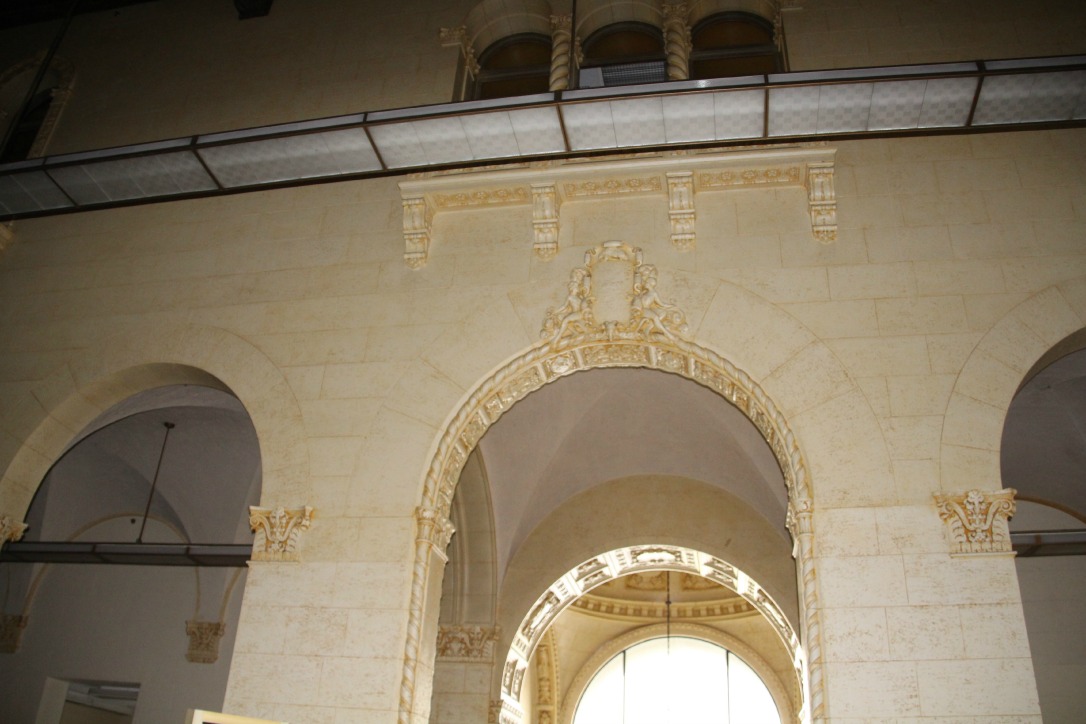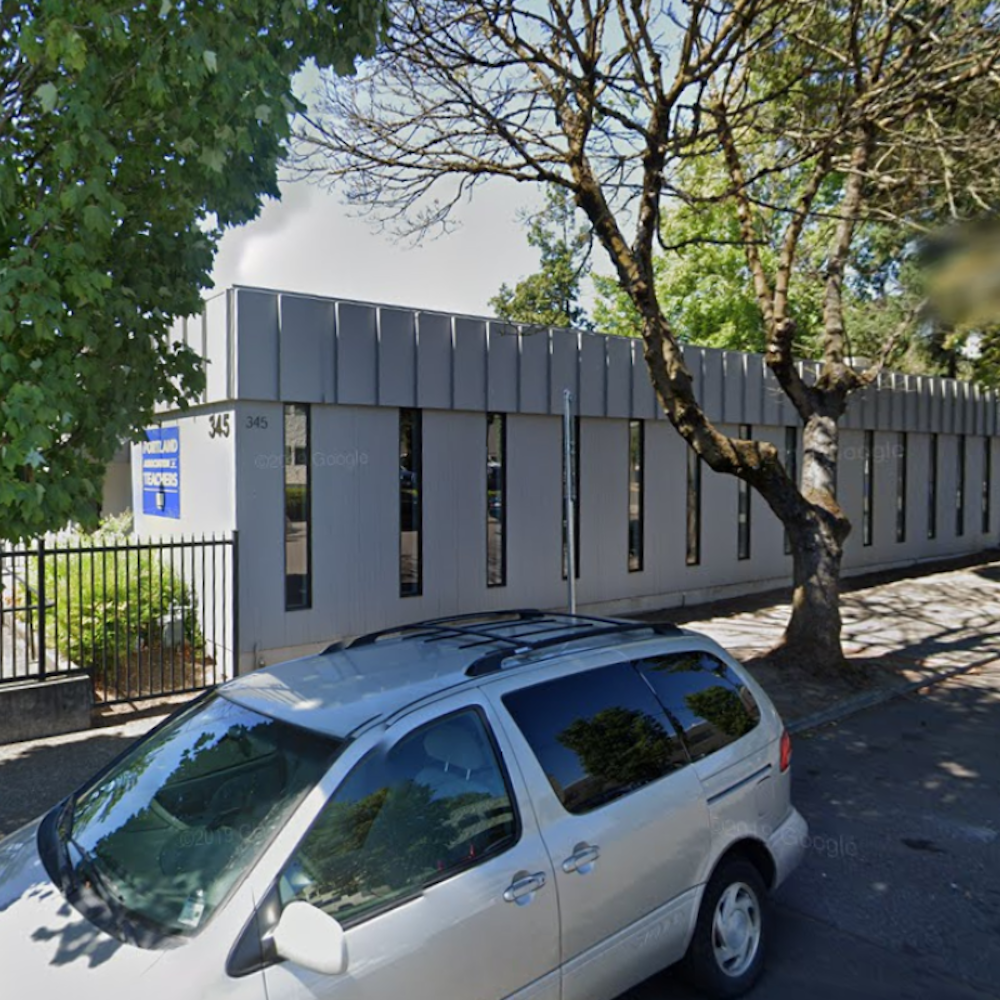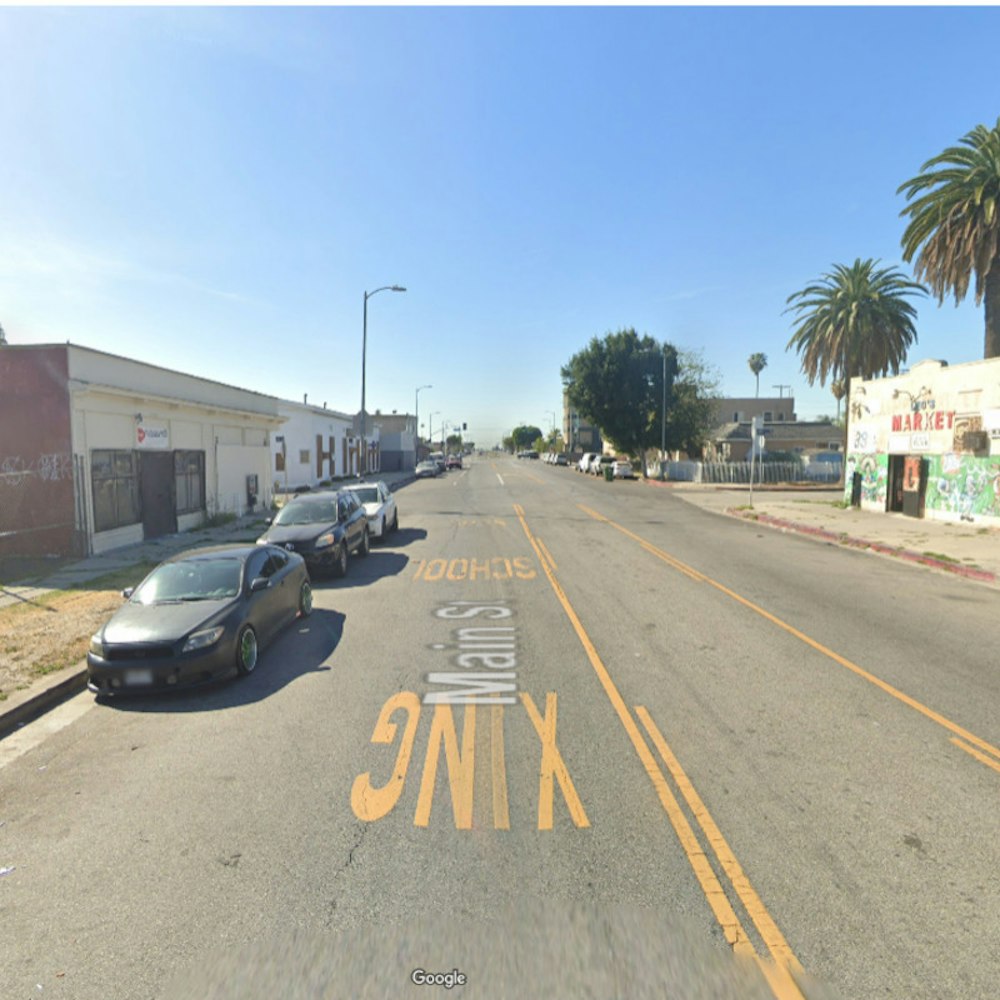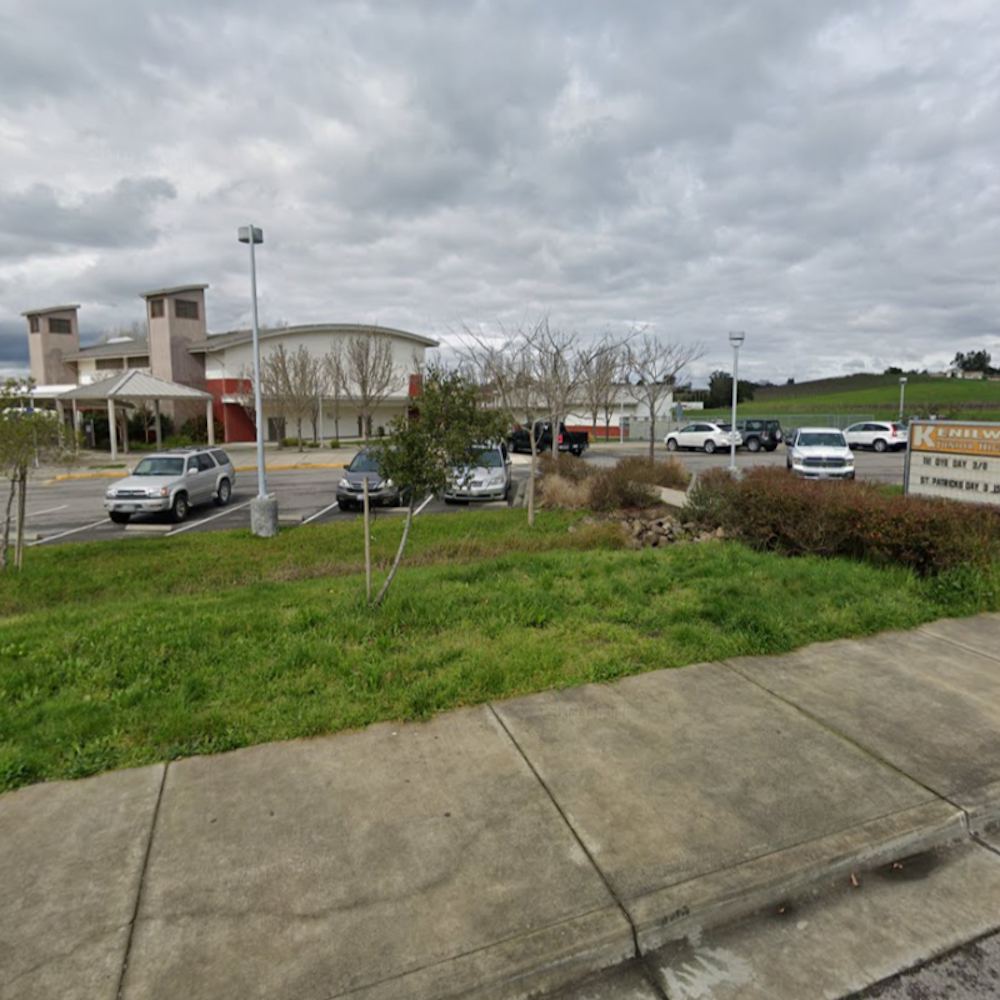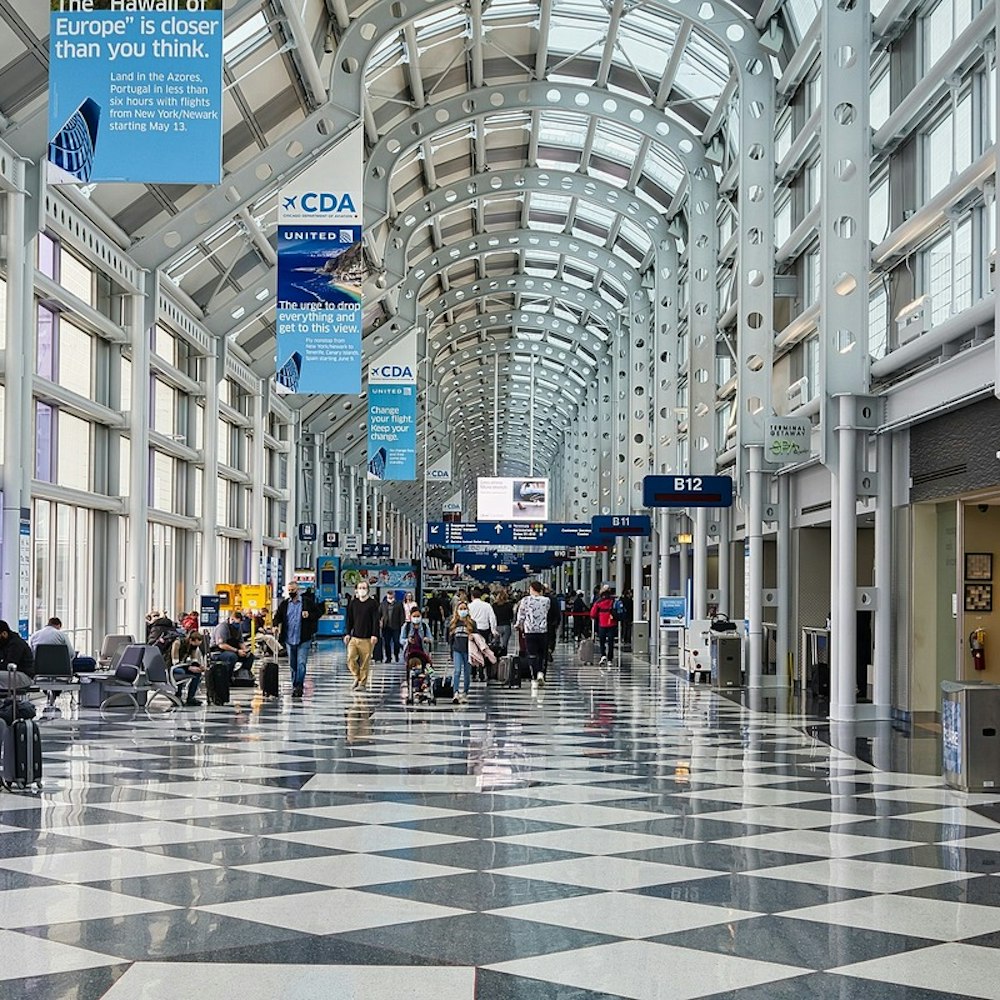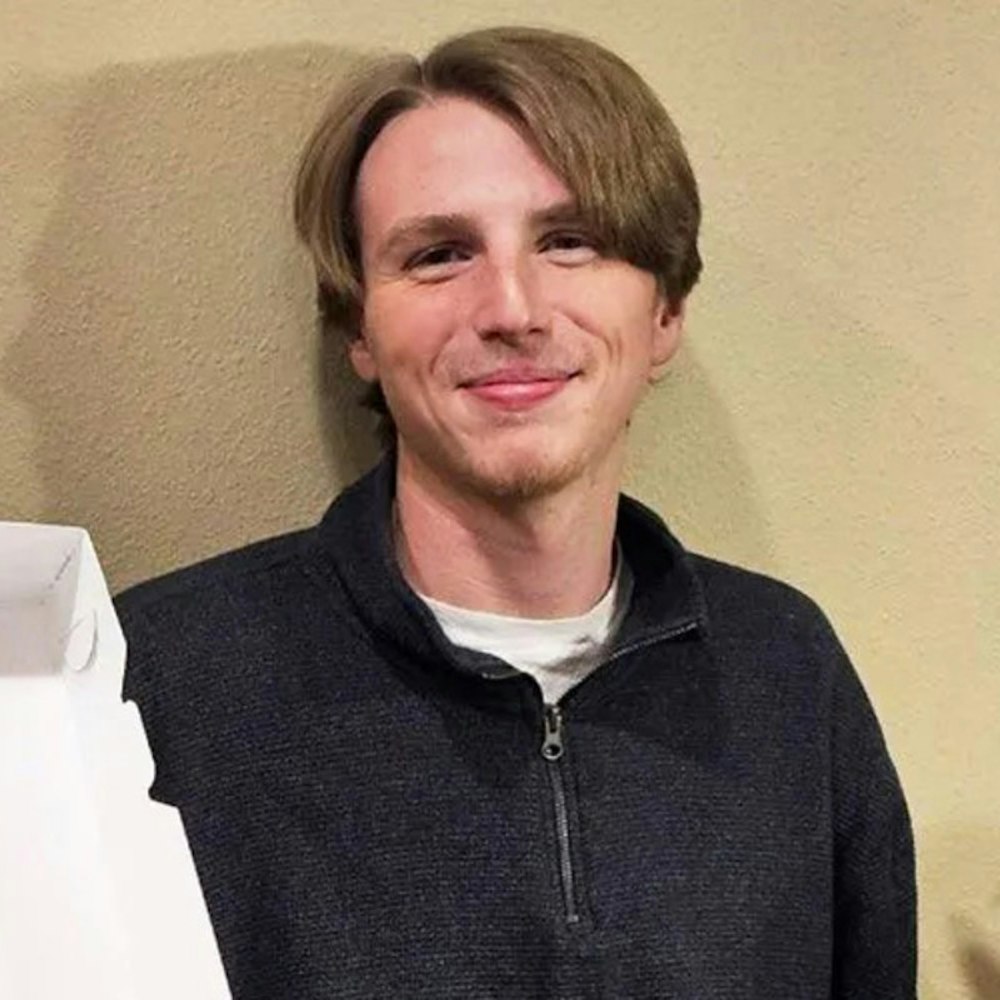
We wrote a brief story in March about the demolition of that ugly pedestrian bridge at 150 Van Ness and Hayes ahead of a new condo development. It unearthed a saga involving a piece of California’s transportation history, and a salvage odyssey spanning construction sites across the city today.
The Automobile Age
150 Van Ness opened in 1925 as the headquarters of the young Automobile Club of California (ACC). The group had grown substantially from its turn-of-the-century origins as a gathering of car enthusiasts that met at Cliff House, and it decided to invest in some fancy new offices.
But the Van Ness building, by famous local architect George Kelham, came with a backup plan in case the car association plan didn’t work out. The lobby included 30-foot walls, arches, rotundas, and balconies and parapets, and a ceiling of hand-painted wood. The idea was to sell off the building as a hotel if need be, and turn the lobby into an ornate reception area.
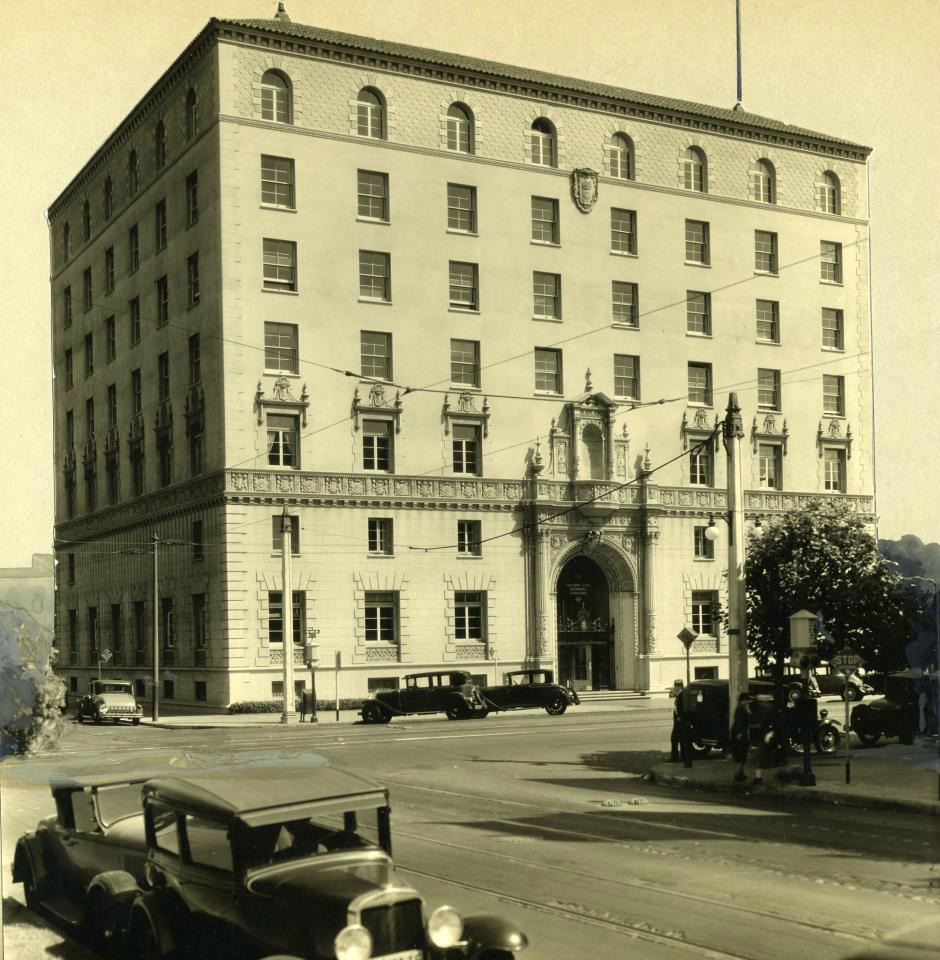 The original 150 Van Ness, source unkown. Via Michael Bug Deakin.
The original 150 Van Ness, source unkown. Via Michael Bug Deakin.
Yet, the ACC prospered last century as the country entered the age of the car. Today it is known as the Northern California, Nevada and Utah chapter of the American Automobile Association, and is based in Emeryville.
The building, meanwhile, fell into obscurity. A 1960s remodel covered the exterior in what one commenter called a “green skin” of glass and metal paneling. Additional embellishments included a lot of interior cruft, and the pedestrian bridge.
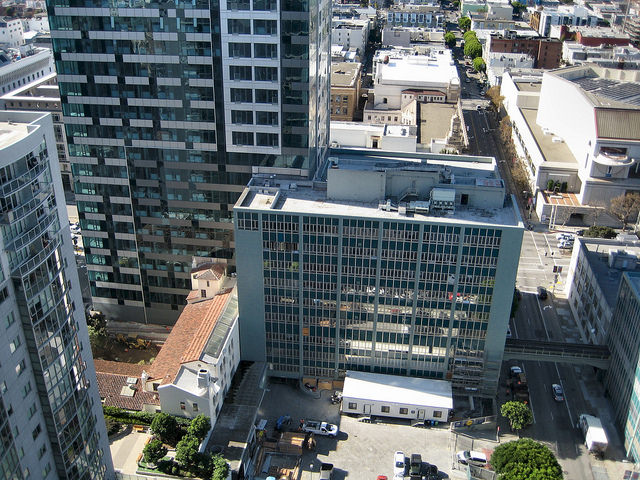 150 Van Ness before demolition. Photo via Apollo's Light/Flickr.
150 Van Ness before demolition. Photo via Apollo's Light/Flickr.
The original details — the former exterior, and the hybrid office-hotel lobby — were only remembered by a few history and architecture buffs, and people who had seen the building in its prime. This past year, the whole structure was scheduled for demolition as part of a new condo development being planned by local real estate firm Emerald Fund.
Instead, the unusual original interior lobby has been salvaged, and is today sitting in pieces up at Heritage Salvage in Petaluma awaiting some grand new purpose.
The Last-Ditch Salvage Effort
Some Hoodline readers, including Shotwellian and Josh Berkus, brought up the history of the building and its lobby in the comments of our March article, but we at least had assumed it had been destroyed long ago.
Then a couple weeks ago, somebody named Michael Bug Deakin stopped by to let everyone know that he had the lobby. He had figured out a way to get in and collect parts of the interior before Emerald Fund completely gutted the building.
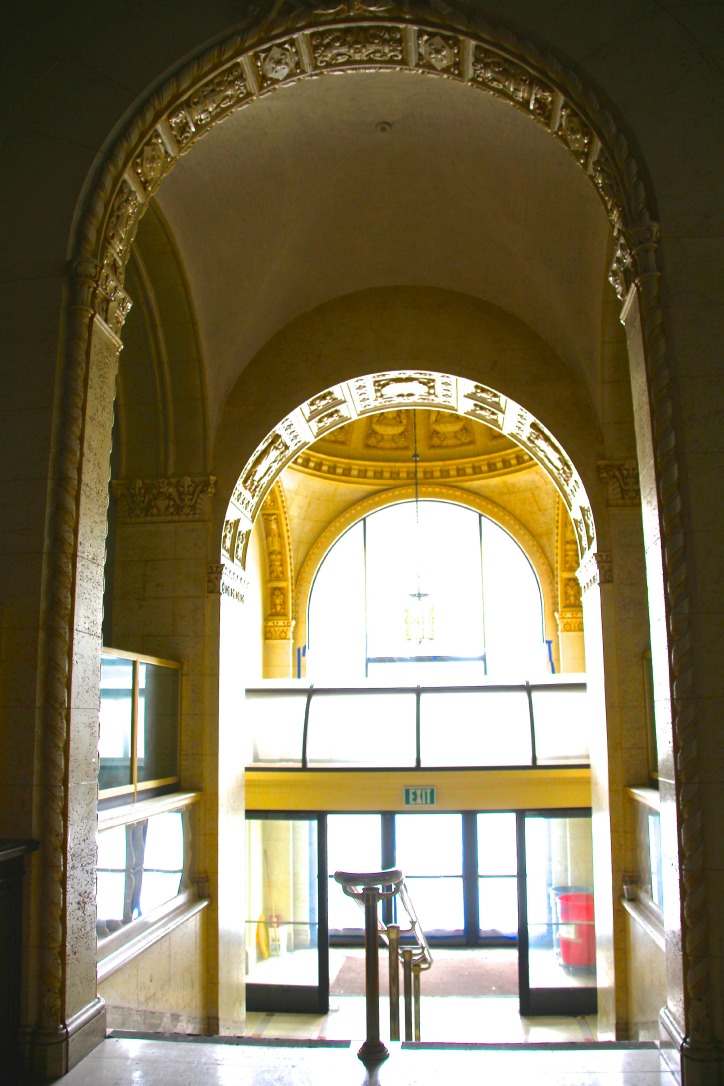
Deakin turns out to be an expert on such work, having remodeled more than 120 restaurants and taverns in the Bay Area. He got his start sitting with his truck at the Sonoma County dump, asking construction crews to hand over the pieces of historic barns and houses. Today, his 16-employee operation and ever-increasing stash of salvaged goods have grown to cover some three acres on the Petaluma River.
In a phone interview last week, he explained that he has been spending a lot of time in San Francisco in recent years, tailing new construction sites to search other historic buildings that might contain neglected treasures.
And he’d had his eye on the 150 Van Ness property after plans to demolish it started to move forward in 2013. Emerald Fund at first wanted him to look at the boiler room – ”just stuff in the basement, which I wasn’t interested in. I said, I want the lobby.”
“They basically told me it was off limits,” Deakin explained. “Their architect said it would cost more than $100,000 to take apart and preserve in any reasonable fashion.”
He responded with the suggestion of taking the issue to the public.

“I wrote an article that was going to get published in a historical and trade show magazine,” he told us, “and I was about to publish if I was not going to get on the same page about how to rescue the classic lobby in a building by a famous architect. I sent them a copy of the article before it was published. [A representative from Emerald Fund] called me in 20 minutes and said we need to talk.”
The plan worked, according to Deakin.

“They certainly got it,” he said. “They went out of their way, they spent a lot of money taking all the stuff out. As far as I’m concerned they stepped up to the plate and did their part for the rescue…. They did an amazing job recording and numbering so I or someone could reassemble.“
Emerald Fund, however, held onto some pieces, possibly to repurpose into its new structure.
Deakin's photos throughout this article show what the building and lobby looked like.
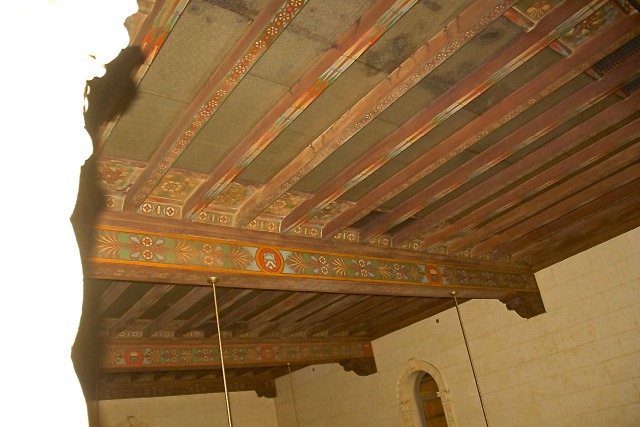
Salvage In San Francisco Today
Below we’ve also included the essay that Deakin wrote – it's not just about 150 Van Ness, but a first-person narrative about his recent experiences working to salvage items at construction sites around downtown and the city.
Reclamation Road!
By Michael Bug Deakin
Sustainable San Francisco! If you are renovating a historic home or commercial space in San Francisco there is value in much of the materials you remove in the process. There is heritage and story in every piece, and that story is so important. We are a product of our history and we all love a talking story. Every time I see the telltale chain link fence and paraphernalia that comes concomitant with a remodel, I drop off my card or talk to a foreman at many of those sites, and I still relish my chances at dumpster diving! Each job elicits a different response.
A demolition at Geary and Jones didn’t have the time to wait nor the patience to take the historic posts or beams out of there. When I asked if I could send a truck in to pick up the ones that were still reasonably whole the foreman asked how long it would take. I responded that I could have a truck there the next day. “We need them gone today” was the response so they ground them up with an excavator and chucked them in a dumpster. Meanwhile, the site has now sat dormant for months.
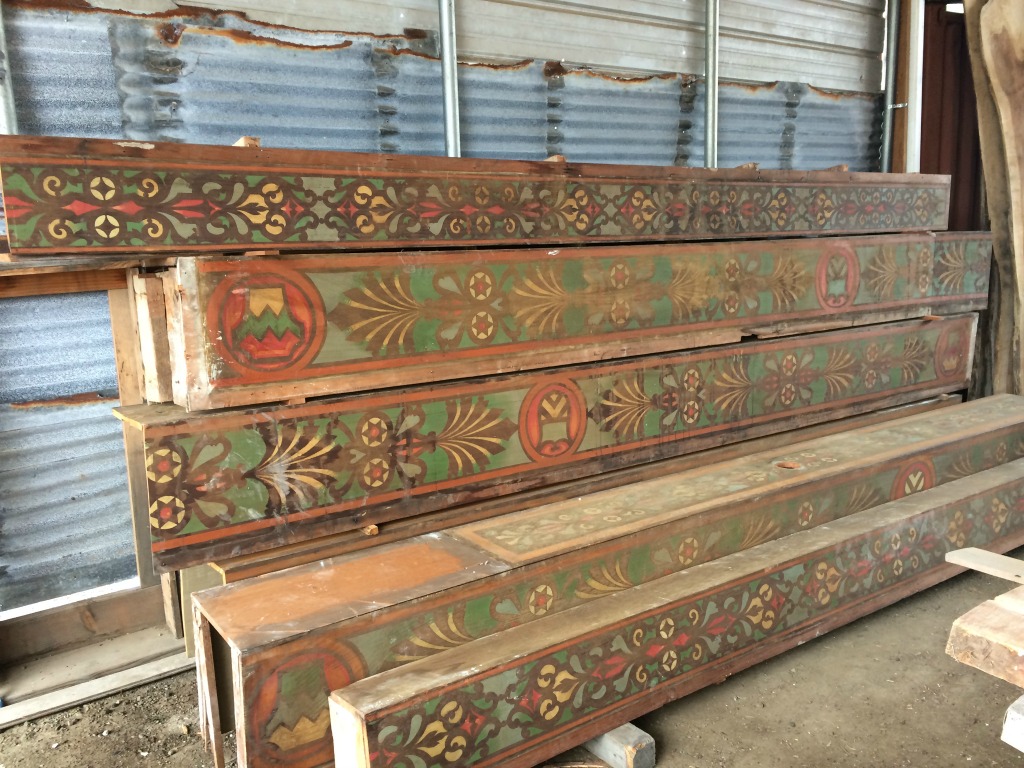
My stop at 722-728 Montgomery Street, now known as the Belli Building, fared much better. It was built in 1849, destroyed by fire in 1851 and immediately rebuilt, using the old walls and foundations. The two brick buildings were constructed on an eight-foot deep foundation of redwood timbers, like a raft in the mud of what was then Yerba Buena Cove. I watched the tides rise and fall in the elevator shaft while we removed the treasures.
It operated as a cigar warehouse, a theatre where Lotta Crabtree performed, and a public bathhouse among other things. “The King of Torts”, attorney Melvin Belli bought the property in 1958 and restored it, but it fell into major disrepair after he died in 1996. Ironically, his 6th wife and widow Nancy Ho Belli was sued for allowing a historic landmark to fall in to such disrepair while she was on the city’s landmarks board!
Belli represented Sirhan Sirhan who assassinated Robert Kennedy, and Jack Ruby who murdered Lee Harvey Oswald. His who’s who list of clients included Errol Flynn, Lana Turner, Mae West, Zsa Zsa Gabor, Tony Curtis, Chuck Berry, Muhammad Ali, the Rolling Stones, Jim and Tammy Faye Bakker and Martha Mitchell. To celebrate a successful case and announce the pending celebration, Belli would raise the Jolly Roger and fire off a cannon mounted on his office roof.
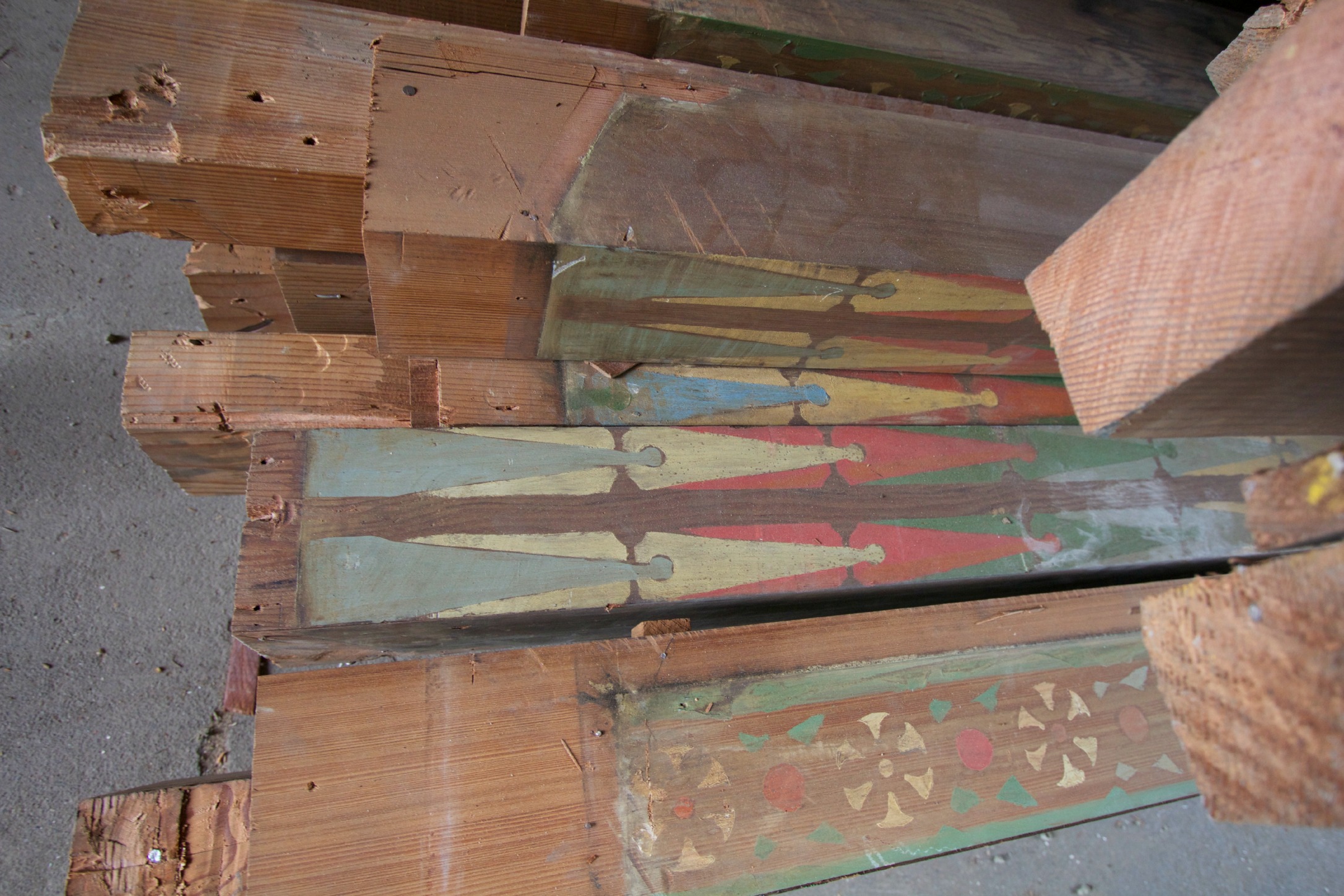
I ended up rescuing some beautiful 10” x 12” 1851 fir beams, although we had to cut the twenty footers in half to get them out of the basement because they had already built out the main floor. We also got some original redwood 3x12’s, three wooden columns milled from old ships masts, a couple of original doors and some street lamps.
Next I toured the California State Automobile Association original Head Office at 150 Van Ness. It was designed by renowned San Francisco architect George Kelham and opened in 1925. The lobby was intentionally built to double as a Hotel entryway in case the CSAA did not catch on. If the Automobile Association did not fly the building could be sold as a hotel.
A little history here - in 1900 the Automobile Club of California was founded at San Francisco's Cliff House. The club's first goal was to open Golden Gate Park to automobiles. Their membership consisted of 11 automobilists. In 1924 Emergency Road Service was launched, and received 429 calls for assistance in its first month of operation. In San Francisco, CSAA deployed a fleet of Harley Davidson motorcycles to assist motorists and to sweep broken glass from the streets after accidents. In 1930 membership was 92,331 and they have not looked back since - it was 4 million in 2000.
Well, now the Emerald Fund (EF) is remodeling the building and I was asked to look at various recyclables in the basement. The only thing I was interested in was the lobby. Beautifully cast 30-foot high walls with soaring arches, rotundas and balcony/parapets. The whole ceiling is hand painted wood. I returned with our own Martyn Peachey. We were sure we could figure out a way to dismantle and save a lot of the structure. Martyn has performed operations like this back in England. Meanwhile, as an EF manager told me, the New York Architect for EF told them any salvage operation would cost well in to six figures. I was told I would not be allowed to bid the job nor try to salvage any of it.
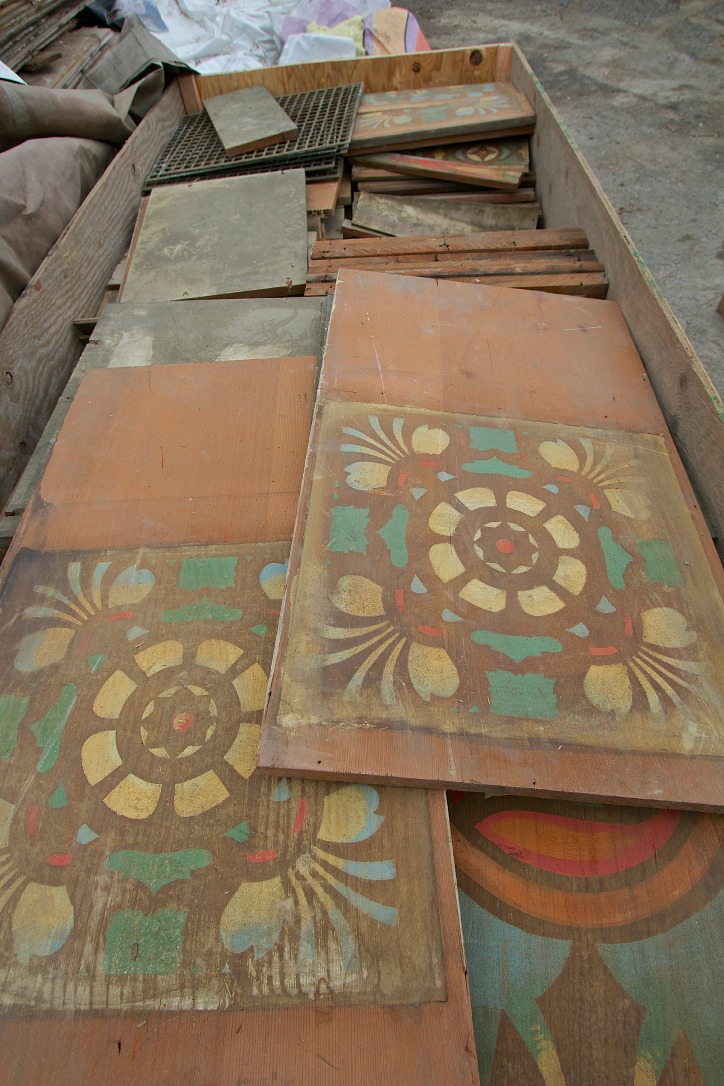
This would be a travesty. They are re-skinning 100 Van Ness and converting the office building to 400 apartments and now they submitted plans to raze the adjacent 108-foot building at 150 Van Ness and build a new 12-story, 120-foot tall structure stretching all the way from Van Ness to Polk along Hayes Street. In addition to the 150 Van Ness parcel on the corner the project will cover the 4 parking lots there now and yield 429 new apartments, over 9,000 square feet of retail and an underground garage with parking for 218 cars and 211 bikes.
After pushing buttons, ranting around to whomever might listen and preparing for a media campaign, I got a note from Jim Warshell of the Hayes Valley Neighborhood Association. (whom Ms Bonnie Spindler had contacted for me) He sent me some information and contact info for Marc Babsin, Principal of the Emerald Fund. Mr Babsin responded to my email with this “We are most certainly interested in salvaging as much as of the historical elements of the building as possible. We hope to incorporate a few of the historical details in the new building, and anything we don’t use can be removed and preserved by a salvage company.”
As of this printing it has been set for me to have a conversation with Marc Babsin in the first week of September. I will keep you posted about the outcome but I do believe that the buttons that I pushed have made the difference here. Onwards!
I was asked to go look at some pieces of architectural salvage in the back of a warehouse around 8th and Bryant. The only access was a small steel door from an alley. There was about 3,000 board feet of old growth fir 3x12’s from the old Scavenger building that were in beautiful shape and then, piled in a jumble but still somewhat bubble wrapped was the treasure.
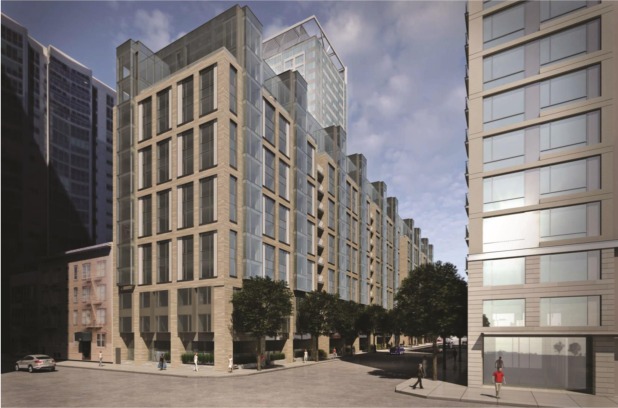 The new condos going in along Hayes, to replace 150 Van Ness.
The new condos going in along Hayes, to replace 150 Van Ness.
It turned out the jumble of pieces were from Linden Towers. In 1885 silver baron James C. Flood built one of the only two buildings (along with the Fairmont Hotel) on Nob Hill to have survived the 1906 earthquake and fire. The “Old” ‘James C.” Flood Mansion was refurbished under the direction of Willis Polk and is now the Pacific Union Club.
In 1912, Flood’s son, James L., began construction of the “new” mansion on Pacific Heights. After James L died his wife Maud donated the mansion to the Religious of the Sacred Heart. It is now operated as a wedding/party venue and school.
There was once a third and even more extravagant Flood Mansion, called Linden Towers, in Menlo Park (now Atherton), not far from the “farm” of Nob Hill neighbor Leland Stanford. The neighbors called it “The White Castle.”
Situated on 600 acres, this marvel (or monstrosity as some viewed it) was built in 1878, and was the most opulent country home in America at that time. The residence was torn down in 1926 after the death of James L. Flood. The furnishings were sold at auction and who knows where these pieces wandered over the last 88 years.
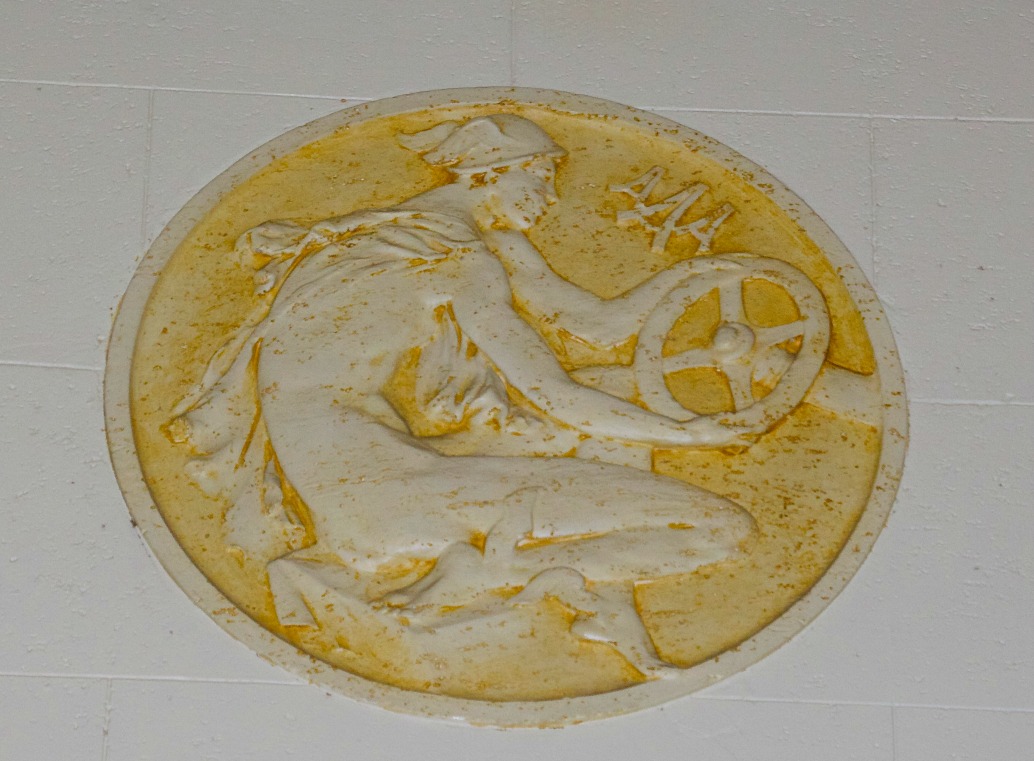
Heritage Salvage has a wonderful collection of arches, pillars, mantles and wainscoting from the Linden Towers. Some of these are on display at the 2014 Historic Home Trade Show.
We would remind you all that if you live in a historic building or are renovating a commercial one, please save all the pieces and we would love to look at them. Our history is such an important part of who we are today and repurposing Heritage materials and passing along their story is our passion!
